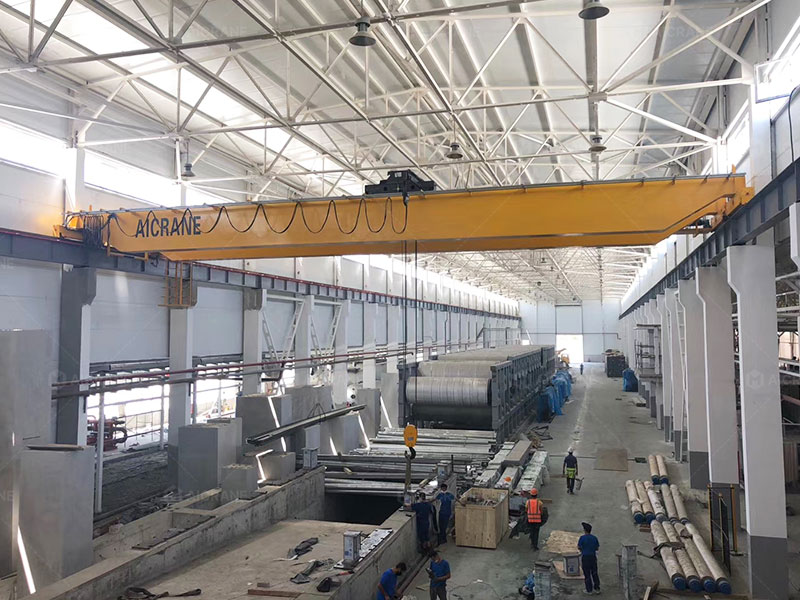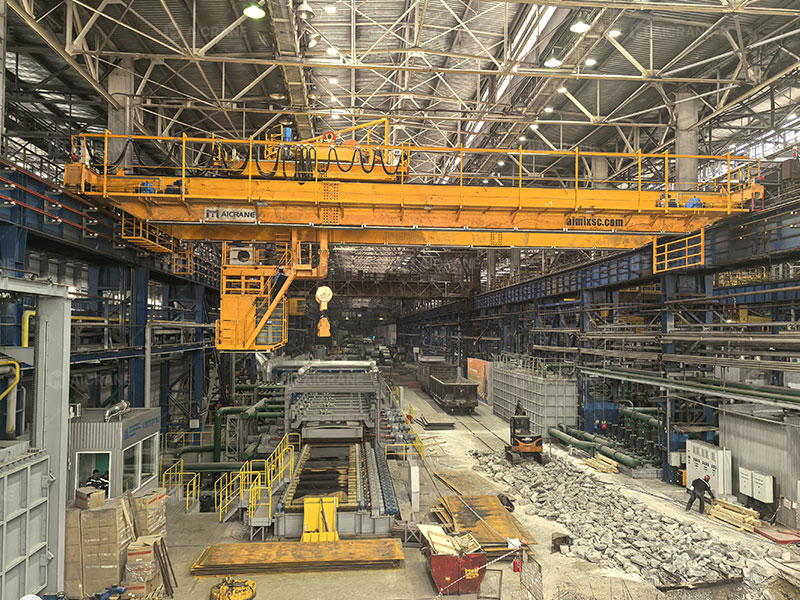When it comes to double girder overhead crane design, the choice of power and control cable management system plays a critical role in ensuring operational efficiency, safety, and longevity of the equipment. Two of the most widely used systems are cable reel systems and festoon systems. Each system comes with its own unique set of advantages and considerations, and selecting the most suitable one depends on various factors such as crane travel distance, working environment, load requirements, and maintenance accessibility.
In this article, we will explore the fundamentals of both cable reel and festoon systems, compare their strengths and limitations, and provide insights into how to choose the appropriate system for your double girder overhead crane application.

What Is a Cable Reel System?
A cable reel system consists of a reel drum—either spring-driven or motorized—that automatically winds and unwinds the power and control cables as the crane moves. These reels are typically mounted at one end of the crane runway or on the crane bridge itself.
There are two main types of cable reels used in overhead cranes:
-
Spring-driven cable reels: These use a mechanical spring to provide tension, retracting the cable when slack.
-
Motor-driven cable reels: These use an electric or hydraulic motor to drive the reel, often used for longer distances or heavier cables.
Cable reels offer a neat and controlled way to handle long lengths of cable, preventing tangles and reducing wear.
What Is a Festoon System?
A festoon system uses a series of trolleys that run along a track or C-rail mounted to the crane bridge or runway. The electrical cables or hoses are supported in looped arrangements and move with the crane or trolley as it travels along the path. Festoon systems are common in cranes, hoists, and other moving machinery.
Festoon trolleys can be made from metal or plastic and may run on I-beams, C-tracks, or square rails, depending on the application and load requirements.

Key Comparison: Cable Reel vs. Festoon System
1. Installation Complexity and Cost
-
Festoon System:
-
Easier and more cost-effective to install.
-
Components are generally off-the-shelf, and replacement parts are readily available.
-
Installation does not usually require specialized tools or training.
-
-
Cable Reel System:
-
More complex installation process, especially for motorized reels.
-
Requires careful alignment and setup of tension and torque settings.
-
Typically more expensive due to motorization and mechanical parts.
-
Conclusion: Festoon systems win in terms of initial installation simplicity and lower upfront cost.
2. Cable Management and Appearance
-
Cable Reel System:
-
Offers a compact and clean solution.
-
Keeps cables organized and protected from external elements.
-
Ideal for environments where aesthetics and space-saving design are priorities.
-
-
Festoon System:
-
Takes up more horizontal space due to the looping nature of the cables.
-
Cable loops are exposed, which may not be suitable for dirty or hazardous environments.
-
Conclusion: Cable reels provide superior cable management in terms of neatness and protection.
3. Maintenance and Serviceability
-
Festoon System:
-
Simple design means fewer parts that can fail.
-
Trolley and cable replacements can be done quickly without crane downtime.
-
Requires regular inspection to ensure cable loops are not dragging or snagging.
-
-
Cable Reel System:
-
More mechanical parts that can wear out, especially springs or motors.
-
If the reel fails, the entire system may be inoperable until repairs are made.
-
More time-consuming and costly to maintain.
-
Conclusion: Festoon systems are easier and more economical to maintain in the long run.
4. Travel Distance Capability
-
Cable Reel System:
-
Highly effective for long travel distances, especially when mounted on the crane runway.
-
Motorized reels can handle hundreds of meters of cable with consistent tension.
-
-
Festoon System:
-
Works well for short to moderate travel distances.
-
Beyond 100 meters, the system becomes bulky and less efficient due to longer cable loops.
-
Conclusion: Cable reels are better suited for long-travel applications.
5. Durability in Harsh Environments
-
Cable Reel System:
-
Provides better protection for cables in environments with moisture, chemicals, or heavy dust.
-
Enclosed reels prevent exposure to damaging elements.
-
-
Festoon System:
-
Exposed cables and trolleys are more vulnerable to environmental damage.
-
Additional protective measures (e.g., sealed tracks, special cable jackets) may be required.
-
Conclusion: Cable reel systems offer higher durability in harsh operating conditions.
6. Flexibility and Customization
-
Festoon System:
-
Easily customizable with different trolley types, track layouts, and cable arrangements.
-
Can support not only electrical cables but also air or hydraulic hoses.
-
-
Cable Reel System:
-
Less flexible once installed; modifying the length or type of cable often requires significant changes.
-
Typically supports electrical cable only, unless using specialized reels.
-
Conclusion: Festoon systems offer greater flexibility for custom overhead crane configurations.
Application Suitability
| Application | Recommended System |
|---|---|
| Short-to-medium crane travel (<100m) | Festoon System |
| Long travel distance (>100m) | Cable Reel System |
| Harsh or outdoor environments | Cable Reel System |
| Projects with tight budgets | Festoon System |
| High-speed applications | Cable Reel System (motor-driven) |
| Multiple hose and cable combinations | Festoon System |
When designing a double girder overhead crane, selecting between a cable reel and festoon system depends on a blend of technical, operational, and environmental factors. Here’s a checklist to help guide your decision:
-
Crane Travel Distance: For longer runs, cable reels (especially motorized) are more efficient.
-
Environment: Dusty, wet, or chemically aggressive settings favor enclosed cable reel systems.
-
Speed Requirements: Fast-moving cranes often require motorized reel systems for stable cable handling.
-
Budget: If cost is a major concern and the environment is moderate, festoon systems are ideal.
-
Maintenance Resources: Facilities with limited technical support may prefer the simpler festoon design.
Final Thoughts
Both cable reel systems and festoon systems are time-tested cable management solutions in double girder overhead crane design. While festoon systems offer cost-effectiveness and ease of maintenance, cable reel systems bring advantages in cable protection, compactness, and long-distance applications.
The best choice ultimately depends on the specific operational conditions of your crane. Engaging with a qualified eot crane manufacturer or systems integrator during the design phase can help you evaluate all parameters and choose the most appropriate system for long-term performance and reliability.